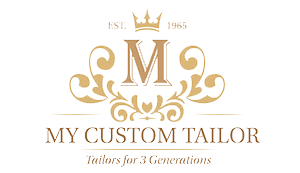CUSTOM - MADE CLOTHES
Wearing something created expressly for one's body and mind is an intoxicating luxury particularly for men accustomed to buying off the rack. After realizing what such personalized raiment can do for him both physically and psychologically, it is the rare man who doesn't become a convert for life. Even in today's culture of instant gratification, a large majority of the world's best dressed men still go to the effort and expense go having their clothes custom made. Bespoke fashion allows its wearer to act, in concert with whatever skilled craftsmen he has chosen, as the architect of his own look. This collaboration usually produces a dressing style that is individual and worldly.Custom-made apparel is the product of exact measurements taken on a known individual. It's the difference between designing a garment on a real person and designing one for an imaginary figure. No ready-to-wear garment, no matter how well it is altered, can ever be as accurately fitted as one made by a skilled craftsman who constructs it right over the bones and bumps of his client. The maker must be an artist who can compensate for whatever nature has withheld. In cases where a considerable remolding of the client's form is required, the end result can become a glorified abstraction of subject's better self.
The advantages of well-designed custom-made wearable over off-the-peg are significant and self-evident. With proper rotation and care, handmade apparel will outlast any item produced in a factory. A custom-made suit will yield at least ten years of good service, while a handcrafted shoe can easily last over twenty years. Amortized over the life of the product, the cost per annum favors the custom-made quality.
However, value is not the primary reason many men prefer custom tailoring. In the bespoke world, everything revolves around the pampered customer - his build, posture, coloring, and personal taste dictate all. Buying custom clothes represents the sort of focused and efficient use of time that top executives try to cultivate throughout their business day. Additionally, the relationship forged over time between maker and client can provide pleasure above and beyond the work produced by this alliance. Given the privacy and intimate attention afforded each customer by this process, a man can relax during his fitting and then return to the rigors of daily life refreshed.
Having described the real upside to the bespoke experience, we must now consider its potential downside. One of the inherent disadvantages of custom making is that the finished product cannot be judged until it is too far along to be substantially changes. Therefore, much depends on the tasted and aesthetic sensibilities of the maker. If he adheres to the time-tested step of the custom-tailor tradition, the materials and workmanship that normally accompany such a process usually ensure the garment's superior quality. However, the quality of its design is another matter.
The highest-caliber workmanship or carriage trade service will not undo the unsightliness of a poorly designed peaked lapel, an unflatteringly shaped dress shirt collar, or an inelegantly formed toe box. Whereas most men operating as custom makers are terrific mechanics and skilled craftsmen, their tastes tend to reflect their own working-class backgrounds. Many well-established firms are now owned by an employee who stepped out of the workroom to take over the business after the founder retires or passed on. Years of laboring over his craft hardly give him the appropriate social frame of reference to act as arbiter of taste and style in this collaboration.
Examples of this can be found in most Hong Kong tailored clothes. Compared to the average ready-to-wear suit, the Hong Kong creation, which generally features better fabrics and workmanship, offers a good value. However, most are poorly designed, inexpensively finished, and, therefore, unsophisticated in appearance.
Choosing a custom maker is difficult for the man traveling in this rarefied world for the first time. Some protection is assumed if the choice is based on a friend's recommendation. However, you remove considerable risk from the selection process by employing an artisan who has a definable "house style." The finest bespoke firms are still thriving because their signature approach to design has transcended the vagaries of fashion as well as the tastes of their employees. Most of the top firms have their own long-considered ideas on what style shows off a man to his best advantage, and you should listen carefully to see if their beliefs reflect your own. Establishments that claim they will make "anything you want" are to be avoided, unless you yourself are a designer and are prepared to take responsibility for the garment's final form.
If you desire a look all your own, find a craftsman who already makes something recognizably close to what you want and is comfortable adapting it to your needs. I would not go to Bill Fioravanti in New York City for a soft-shouldered, drapey suit, just as I would not ask London's Anderson & Sheppard to make me a fitted, built-up, English-style hacking jacket. Such judgments are easier to reach, since these makers have a clear-cut point of view. While you cannot totally eliminate the risk factor from the custom-made product, choosing a craftsman with a "house look" minimize the margin of surprise. However, in the hands of a craftsman with a strong sense of style, the outcome's unpredictability becomes part of the experience's attraction.
Equally important is understanding just how customer-made the article actually is. Today, the term "customer-made" has come to represent a wide range of different manufacturing processes and qualities, so caveat emptor. Legitimately bespoke products involve a specific series of steps with commensurate degrees of quality and thus price. If a customer is going to order something represented as customer-made, and he is going to receive something made by a different process, he should know this beforehand.
